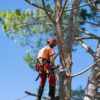Monthly Reports January
January 2022.
The log sales year has started off well with domestic demand continuing to go gangbusters and export prices correcting upward to more sensible levels.
A round of visits to our sawmill customers pre-Christmas confirmed a common theme and that was the lack of sawmill staff to meet production expectations. One larger mill was 10% down on daily output due entirely to a lack of staff to work lumber through the mill.
At a time when sales are strong and log supply is good, a lack of labour is a most exasperating situation. It is even more exasperating when the many who do apply for positions, fail drug tests or fail to turn up for an interview or fail to convince potential employers, they could exceed anything other than problematic status. In one case a potential employee failed the pre-employment drug test to a level indicating they had smoked a joint on the way to the interview!
Take out the no hopers and those who have looked at too much social mis-media and don’t want to get the jab, the supply lines are very thin indeed. Me thinks a government that led with a strong “get off your backside” message rather than a “there there, lets increase the benefit” message, might make a modicum of difference.
Meanwhile there have been a range of fundamentals across the export segment which have moved wharf gate sales prices in to better territory. Shipping costs have come off a massive high and whilst still not where they need to be, are 30% less than October 2021 rates.
Domestic log prices in China have continued to firm in the last 4 weeks with the Government implementing a range of measures to off-set a potential construction sector collapse. This has restored confidence. The correlation between China domestic sales prices and the cost or Kiwi Radiata pine logs is a key market driver.
At the same time, the containerised Southern Yellow Pine trade out of the US has dried to a trickle, taking 500,000 – 600,000 cubic metres per month out of supply lines. This is due to a combination of US domestic new housing demand and a tightening of phytosanitary requirements. This essentially means the China Government are requiring full fumigation, inspection and pass muster status to be the order of the day whereas previously some China Port Authorities were looking the other way.
Spruce log out of Europe has slowed to 500,000 – 800,000 cubic metres per month, half compared to the same time last year. Again, the container trade has become much harder and Europe new house demand is also experiencing a significant increase whilst bark beetle affected forest harvest is decreasing.
Both the SYP and Spruce supply lines compete directly with Radiata pine out of NZ so this is good news for Kiwi forest-owners. In the first 2 weeks of January, we have seen log buyers in China return to the negotiating table in number as concerns mount there could be log shortages looming if demand kicks up strongly, post-Chinese New Year. Most seem to believe it will.
There is also a waiting game being played out with concerns as to what degree there is pent up demand, versus where the likes of in-trouble construction companies like Evergrande will eventually crash land.
The bottom line is, we are seeing tempering in sales and a corresponding hesitancy to push prices too high too quickly. For the moment, the market is moving in the right direction.
The next few weeks will be critical to what happens in Q1 and 2 this year. China eastern seaboard inventory has been falling as expected, as at mid-January sittng at just over 5mil cubic metres. Whilst this may tick up as China takes a 2-week holiday early February, production out of NZ has also been at a low ebb.
If demand does pick up mid-February, then we can expect a continuing price firming in the export market. In order for the NZ domestic sawmill demand to be met, a lift in the lower quality export log sales will be needed to ensure forest harvest is at a level the supply planets remain aligned in both segments.
As always People, please remember the thoroughly important message, “It remains, as always, fundamentally important, no matter the challenges, the only way forward for climate, country and the planet, is to get out there and plant more trees”!
Allan Laurie, MNZIF
Laurie Forestry Ltd













